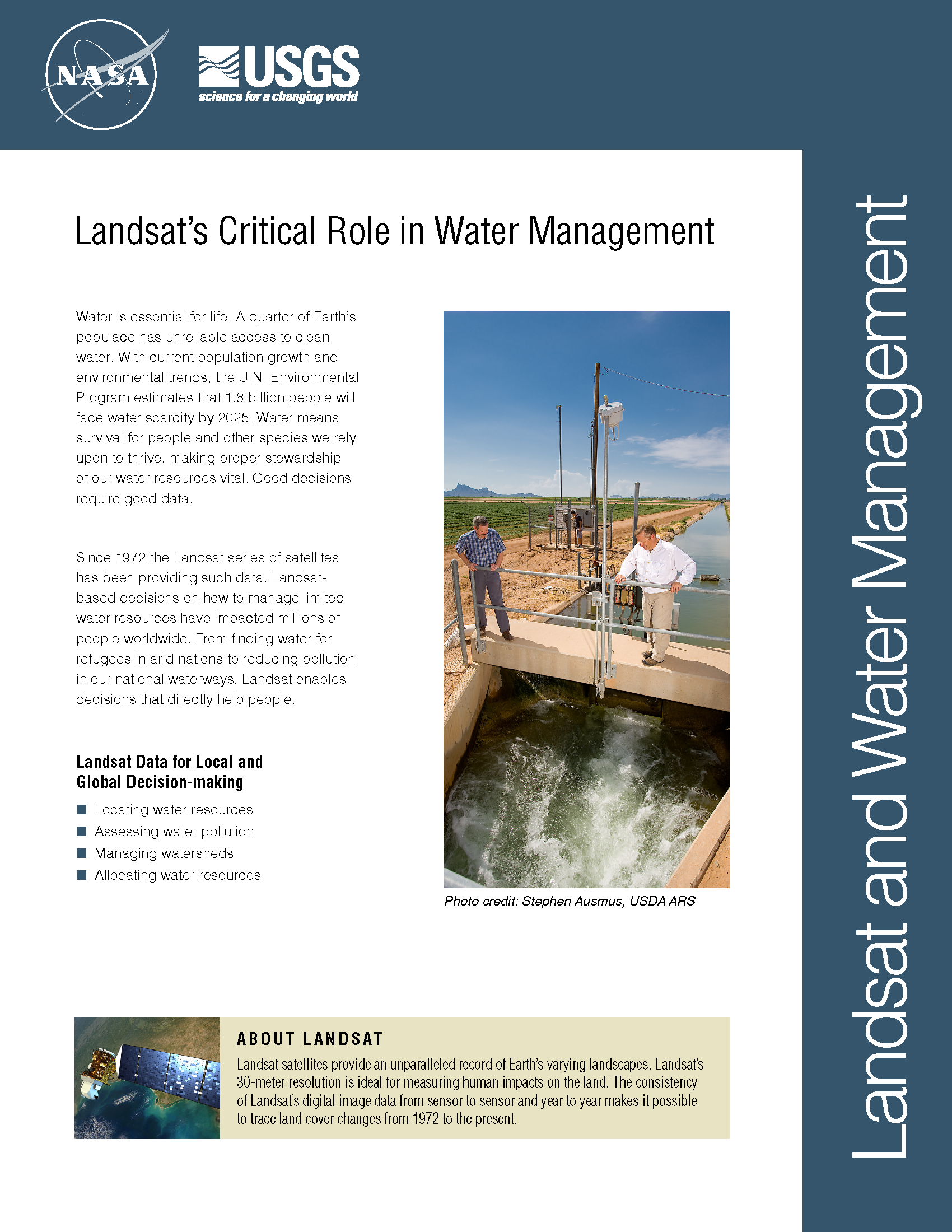Landsat’s Role in Managing Water Resources
Water is essential for life. A third of Earth’s populace has unreliable access to clean water. With current population growth and environmental trends, the U.N. Environmental Program estimates that 1.8 billion people will face water scarcity by 2025. Water means survival for people and other species we rely upon to thrive, making proper stewardship of our water resources vital. Good decisions require good data. Since 1972 the Landsat series of satellites has been providing such data. Landsat-based decisions on how to manage limited water resources have impacted millions of people worldwide. From finding water for refugees in arid nations to reducing pollution in our national waterways, Landsat enables decisions that directly help people.
Water Mapping Technology Rebuilds Lives in Arid Regions
Turkana County in northwest Kenya has been reeling from several years of crippling drought. As a consequence, the nomadic peoples in the region have suffered. Livestock such as goats and cattle, the sole source of income for these pastoralists, have perished by the droves from starvation, and the resulting economic hardship has left many children malnourished. Many have also died from violent clashes over increasingly scarce resources.
Landsat Satellite Sees Green-up Along Colorado River's Delta After Experimental Flow
A pulse of water released down the lower reaches of the Colorado River last spring resulted in more than a 40 percent increase in green vegetation where the water flowed, as seen by the Landsat 8 satellite. The March 2014 release of water – an experimental flow implemented under a U.S.-Mexico agreement called “Minute 319” – reversed a 13-year decline in the greenness along the delta.
Losing Tidal Flats Around the Yellow Sea
Using Landsat time series data, a group of Australian and British ecologist have found that the Yellow Sea has lost 28% of its tidal flats in the last three decades.
Nearly 200,000 Glaciers Mapped for Better Sea Level Rise Estimates
An international team led by glaciologists from the University of Colorado Boulder and Trent University in Ontario, Canada has completed the first mapping of virtually all of the world’s glaciers—including their locations and sizes—allowing for calculations of their volumes and ongoing contributions to global sea rise as the world warms.
Landsat and the Sea
One year ago today, Landsat 8 blasted off from California’s Vandenberg Air Force Base and arched over the shimmering Pacific on its way into orbit. Landsat 8’s main sensor, the Operational Land Imager (OLI), is the latest model in the long line of Landsat Earth-looking radiometers—sensors that have been measuring visible and infrared light reflected from our planet since 1972.
NASA Maps Earth's Croplands from Space
It takes a lot of land to grow food for the world’s seven billion people. About a third of Earth’s terrestrial surface is used for agriculture. And about a third of that, in turn, is used to grow crops. Now, a new NASA-funded effort aims to map crop fields worldwide, identify what’s growing where, and determine whether it’s irrigated or fed by rain.


